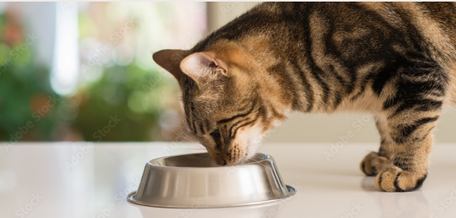Active dogs are like athletes—they need more than just basic nutrition to stay at the top of their game. Whether you have a working dog, a sports dog, or a high-energy companion, the right diet can make all the difference. Frozen meat dog food is increasingly recognized as a gold standard for fueling energetic canines, offering superior nutrition, improved taste, and numerous health benefits.
This article explores why frozen meat dog food is a game-changer for active pets, compares it to traditional kibble, and provides tips for incorporating it into your dog’s diet.
Key Takeaways
- Frozen meat dog food preserves essential nutrients better than processed kibble.
- It supports high-energy dogs with balanced macronutrients and hydration.
- Proper handling ensures freshness, safety, and maximum nutritional benefits.
- Transitioning to a raw diet should be done gradually to avoid digestive issues.
Frozen Meat Dog Food vs. Kibble

1. Preserving Nutrients
Unlike kibble, which undergoes high-heat processing, frozen meat dog food retains more vitamins, minerals, and healthy fats. Freezing locks in the nutrients, ensuring your dog gets closer-to-fresh quality with every meal.
Why it matters:
Active dogs require higher levels of bioavailable nutrients to sustain their energy levels, build muscle, and recover from physical exertion. Freezing helps maintain these essential components.
2. Minimizing Preservatives
Traditional kibble often relies on chemical preservatives to extend shelf life. Frozen meat dog food, on the other hand, uses freezing as a natural preservation method.
The benefit:
Fewer artificial additives mean a cleaner, healthier meal for your dog, reducing the risk of long-term health issues caused by synthetic ingredients.
3. Improved Flavor and Aroma
Dogs eating raw food often find frozen meals more palatable than kibble. The closer-to-fresh taste and natural aroma can make mealtime more enjoyable, even for picky eaters.
Pro Tip:
If your dog seems uninterested in kibble, try introducing frozen meat options to reignite their enthusiasm for food.
High-Energy Pet Diets: Meeting Demand
1. Balanced Macronutrients
High-energy dogs need a diet rich in protein and fat with moderate carbohydrates. Frozen meat dog food is designed to deliver these macronutrients in optimal proportions.
Why it’s essential:
- Protein: Builds and repairs muscle tissue, keeping your dog strong and resilient.
- Fat: Provides a concentrated source of energy for sustained activity.
- Carbs: Offer quick bursts of energy without overloading the diet.
2. Supporting Muscle and Recovery
Active dogs constantly put their muscles to work. Frozen meat dog food is packed with high-quality proteins, which are vital for muscle growth and recovery after strenuous activity.
Added bonus:
The amino acids found in raw meat can also improve coat health, immune function, and overall vitality.
3. Electrolytes and Hydration
Frozen raw foods naturally contain higher moisture levels than kibble, contributing to your dog’s daily hydration needs. For active dogs, proper hydration is critical for maintaining endurance and preventing fatigue.
Quick Tip:
Combine frozen raw food with fresh water during meals to further enhance hydration.
Quality Assurance and Safety

1. Sourcing and Handling
Not all frozen meat dog foods are created equal. Reputable brands use rigorous quality control measures, including testing for pathogens, to ensure safety.
What to look for:
- Human-grade ingredients
- Transparent sourcing
- Third-party safety certifications
Why BJ’s Raw Pet Food is a great choice:
Their commitment to quality ensures your dog receives the best nutrition without compromising safety.
2. Proper Storage at Home
Maintaining freshness and safety begins with proper handling:
- Thawing: Thaw frozen food in the refrigerator, not at room temperature.
- Portioning: Only thaw what you’ll use within 24-48 hours to prevent spoilage.
- Refreezing: Avoid refreezing thawed food, as it can affect texture and nutrient quality.
Transition Tips for Dogs Eating Raw Food
1. Gradual Introduction
Switching to a raw diet requires patience. Start by mixing a small portion of frozen meat dog food with your dog’s current diet, gradually increasing the ratio over 7-10 days.
Why it’s important:
A slow transition minimizes the risk of digestive upset and allows your dog’s stomach to adjust to the new food.
2. Observing Performance Improvements
Once your dog adjusts to their new diet, you’ll likely notice:
- Increased energy levels
- Shinier coats
- Faster recovery times after exercise
Pro Tip:
Track changes in your dog’s activity, appetite, and overall health to ensure the diet is meeting their needs.
Conclusion: The Ultimate Fuel for Active Dogs
For high-energy dogs, nutrition isn’t just about feeding—it’s about fueling their lifestyle. Frozen meat dog food offers superior nutrition by preserving essential nutrients, supporting hydration, and providing balanced macronutrients. Whether your dog is a working companion, a sport enthusiast, or simply an active adventurer, frozen raw food delivers the performance benefits they need to thrive.
Ready to upgrade your dog’s diet? Explore the premium options at BJ’s Raw Pet Food to give your furry friend the fuel they deserve.
FAQs
-
Is frozen meat dog food better than kibble?
Yes, frozen meat dog food retains more nutrients, has fewer preservatives, and offers better flavor, making it a superior option for active dogs. -
Can all dogs eat raw food?
While most dogs benefit from raw food, it’s best to consult your vet to determine if it suits your dog’s health and lifestyle. -
How do I store frozen meat dog food?
Keep it in the freezer until ready to use. Thaw portions in the refrigerator and use them within 24-48 hours. -
What are the benefits of raw food for active dogs?
Raw food supports muscle growth, improves energy levels, enhances coat quality, and helps with faster recovery after activity. -
How do I transition my dog to frozen meat food?
Start by mixing small amounts of frozen food with your dog’s current diet, gradually increasing the ratio over a week to ensure a smooth transition.




















